Himeji Castle: Strategic Defense and Cultural Heritage
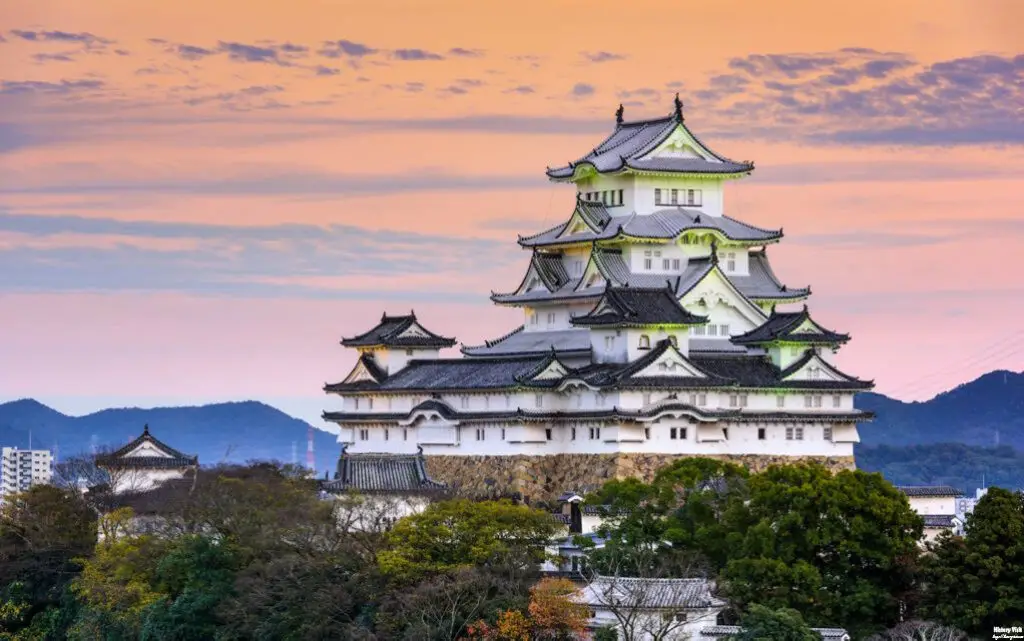
Introduction
Himeji Castle, often referred to as the “White Heron” due to its elegant, bird-like appearance, is one of Japan’s most iconic and well-preserved castles. Situated in the city of Himeji in Hyogo Prefecture, this stunning example of feudal Japanese architecture is renowned for its grandeur, historical significance, and architectural brilliance. Constructed during the early 14th century and expanded in subsequent centuries, Himeji Castle stands as a testament to Japan’s rich cultural heritage and its strategic military ingenuity.
The castle’s significance extends far beyond its aesthetic appeal. It is a symbol of resilience, having survived natural disasters, wars, and modernization. The castle’s intricate design, with its maze-like pathways and robust defensive structures, showcases the advanced military architecture of its time. Additionally, its harmonious integration with the surrounding natural landscape highlights the traditional Japanese philosophy of blending architecture with nature.
In this article, we will explore Himeji Castle’s strategic design, its historical development, and the architectural beauty that has captivated visitors for centuries. We will also delve into its cultural and historical importance, the extensive preservation efforts undertaken to maintain its splendor, and provide practical information for those wishing to experience this national treasure firsthand.
The Strategic Design
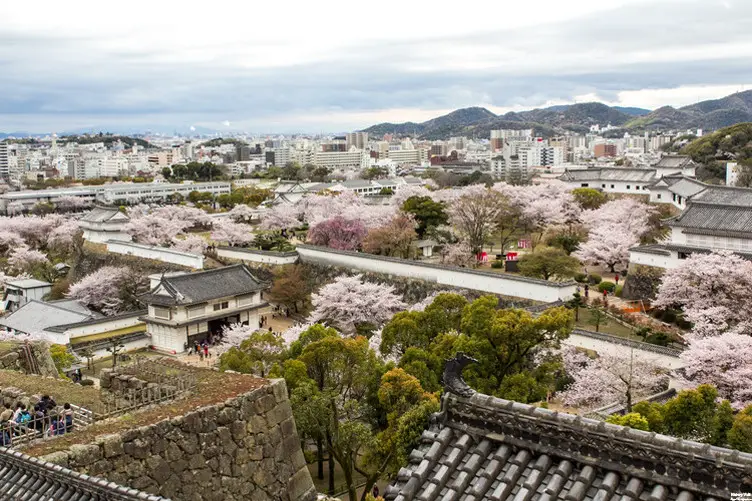
Himeji Castle’s strategic design is a masterpiece of feudal military architecture. The castle’s layout was meticulously planned to maximize defense and create a formidable stronghold. One of the most striking features is the maze-like arrangement of pathways leading up to the main keep, or tenshu. These paths twist and turn, confusing potential invaders and exposing them to defensive attacks from multiple angles. The walls and gates are strategically placed to funnel attackers into narrow passages where they can be easily targeted.
The defensive features of Himeji Castle extend beyond its pathways. The complex is surrounded by three moats, adding an extra layer of security. The inner moat, particularly deep and wide, is a significant barrier against intruders. The walls of the castle are reinforced with stone and plaster, providing protection against both human assault and natural elements. Hidden doors, trapdoors, and secret rooms further enhance the castle’s defensive capabilities, allowing defenders to launch surprise attacks and retreat safely.
The location of Himeji Castle also contributes to its strategic advantage. Perched on a hilltop, the castle offers panoramic views of the surrounding area, enabling early detection of approaching enemies. The elevated position also makes direct assaults more challenging, as attackers must navigate steep slopes and multiple defensive layers. This strategic design reflects the advanced military thinking of the time and the importance placed on creating an impregnable fortress.
Historical Development
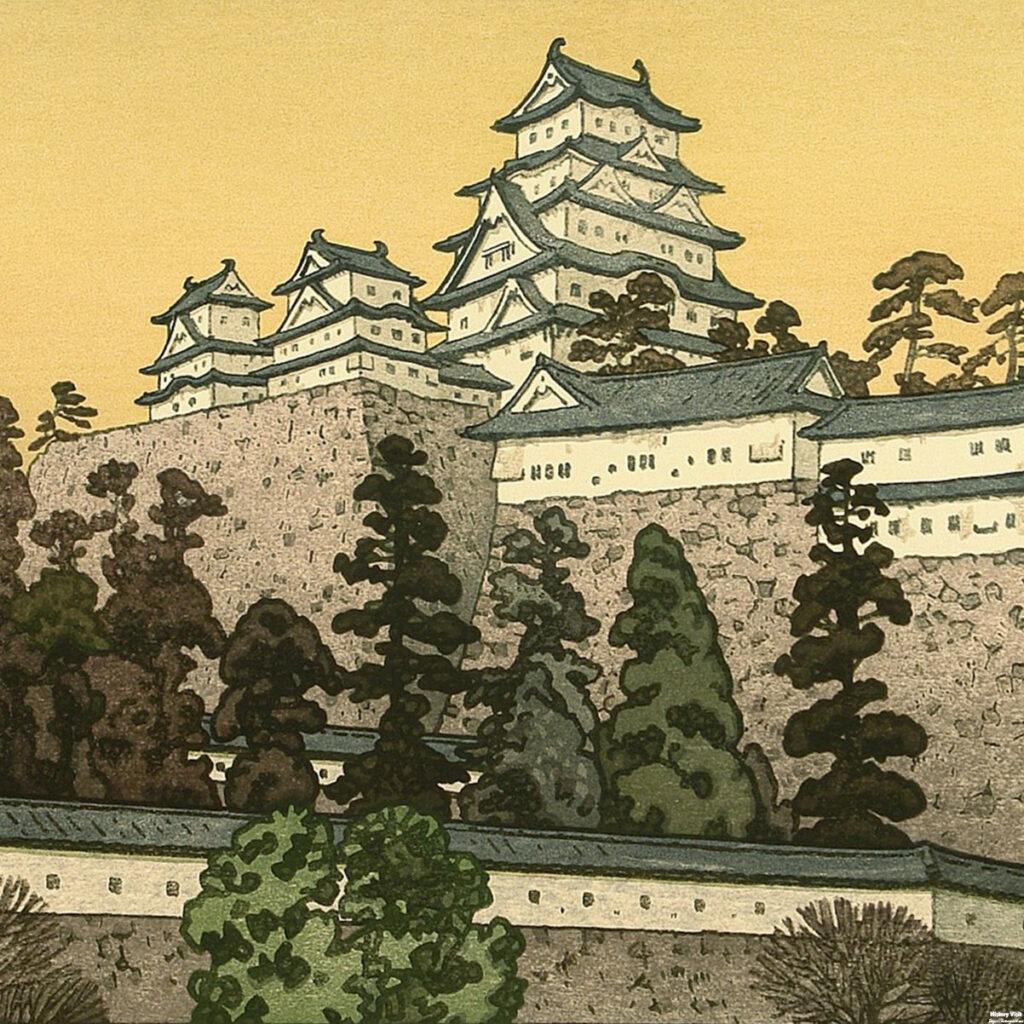
The origins of Himeji Castle date back to 1333, when Akamatsu Norimura constructed a fort on Himeyama Hill. This initial fortification laid the groundwork for what would eventually become one of Japan’s most significant castles. The structure was transformed and expanded under the direction of Toyotomi Hideyoshi in the late 16th century. Hideyoshi’s enhancements included the addition of a three-story keep, which significantly increased the castle’s defensive and residential capabilities.
The most extensive development of Himeji Castle occurred under Ikeda Terumasa, who was awarded the castle in 1600 by Tokugawa Ieyasu, the founder of the Tokugawa shogunate. Terumasa undertook a major construction project, resulting in the magnificent five-story main keep that stands today. This period of expansion also saw the addition of numerous turrets, gates, and defensive walls, transforming Himeji into a sprawling and complex fortress. The construction techniques and architectural style used during this time set the standard for Japanese castles.
Throughout the Edo period, Himeji Castle served as a crucial military and administrative center. It remained under the control of the Ikeda clan and later the Sakai clan, both of whom made further modifications and improvements. The castle’s role as a stronghold diminished with the end of the feudal era in the late 19th century, but its historical and cultural value continued to grow. Efforts to preserve and restore the castle began in earnest, ensuring that it would remain a symbol of Japan’s rich heritage.
Architectural Beauty
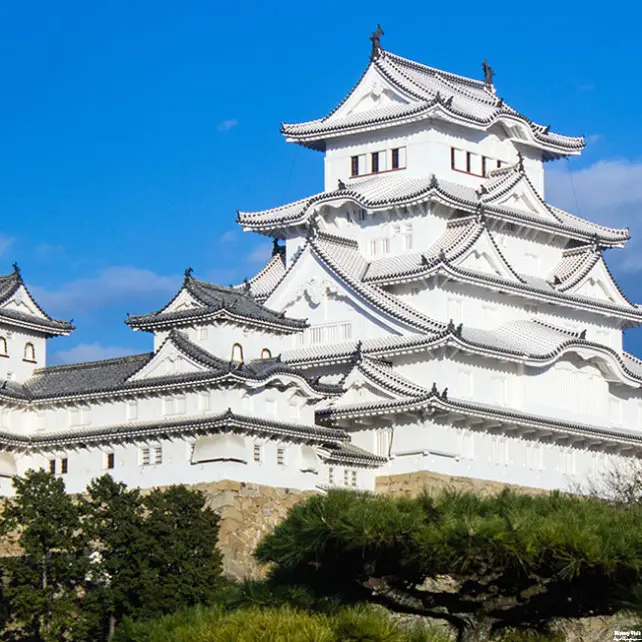
Himeji Castle is not only a strategic fortress but also a masterpiece of architectural beauty. Its most striking feature is the white plaster walls, which give the castle its nickname, “White Heron.” The white walls are made from a mixture of slaked lime, shell ash, and rice bran, creating a smooth and gleaming surface that contrasts with the dark wooden interiors. This white façade, combined with the castle’s elegant rooflines and intricate details, creates a visually stunning effect that has captivated visitors for centuries.
The castle’s main keep, or tenshu, is a marvel of design and engineering. Standing five stories tall, it is the tallest surviving castle tower in Japan. The interior of the keep features a series of wooden floors connected by steep staircases, leading to observation decks that offer panoramic views of the surrounding landscape. The wooden beams and pillars, crafted from massive trees, showcase the skill of the carpenters and the strength of traditional Japanese construction techniques. Decorative elements, such as gilded roof tiles and ornate carvings, add to the castle’s aesthetic appeal.
Harmony with nature is a central theme in the design of Himeji Castle. The castle is surrounded by beautifully landscaped gardens, which change with the seasons and enhance the overall ambiance of the site. Cherry blossoms in spring, lush greenery in summer, vibrant foliage in autumn, and serene snow-covered scenes in winter all contribute to the castle’s enchanting atmosphere. This integration of architecture and nature reflects the traditional Japanese philosophy of creating spaces that inspire peace and contemplation.
Cultural and Historical Importance
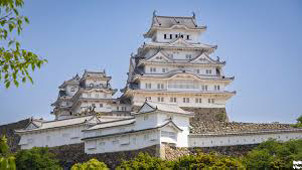
Himeji Castle holds a significant place in Japanese culture and history. It is a symbol of resilience and continuity, having survived centuries of political upheaval, natural disasters, and modernization. The castle’s enduring presence is a testament to the skill and dedication of the artisans and architects who built and maintained it. As one of the few remaining examples of original Japanese castle architecture, Himeji Castle provides valuable insights into the feudal era and the cultural practices of the time.
The castle has also played a prominent role in Japanese literature, art, and media. It has been the setting for numerous historical dramas, films, and novels, cementing its status as a cultural icon. The elegance and majesty of Himeji Castle have inspired artists and writers for generations, contributing to its legendary status. The castle’s representation in popular culture helps to preserve its legacy and introduce new audiences to its historical significance.
Himeji Castle’s recognition as a UNESCO World Heritage site in 1993 further underscores its cultural and historical importance. This designation highlights the castle’s outstanding universal value and ensures that it receives the protection and preservation efforts necessary to maintain its integrity. The international recognition of Himeji Castle as a cultural treasure has helped to raise awareness of its significance and attract visitors from around the world.
Preservation Efforts
Preserving Himeji Castle has been a complex and ongoing challenge. Over the centuries, the castle has faced threats from earthquakes, fires, and the ravages of time. However, concerted efforts to restore and maintain the castle have ensured its survival. Major restoration projects have been undertaken to address structural issues, repair damage, and preserve the intricate decorative elements that define the castle’s unique character.
One of the most significant restoration efforts took place from 1956 to 1964, during which extensive work was done to stabilize the castle and restore its original features. This project involved dismantling and reconstructing parts of the main keep, as well as reinforcing the foundations and walls. The restoration was guided by meticulous research and the use of traditional materials and techniques, ensuring that the castle’s historical authenticity was preserved.
In recent years, additional restoration projects have focused on modernizing the infrastructure while maintaining the castle’s historical integrity. Efforts have included improving visitor facilities, enhancing accessibility, and implementing measures to protect the castle from environmental damage. The role of local and international organizations, including UNESCO, has been crucial in providing the resources and expertise needed for these preservation efforts. The ongoing commitment to preserving Himeji Castle ensures that it remains a vibrant and accessible part of Japan’s cultural heritage.
Visiting Himeji Castle
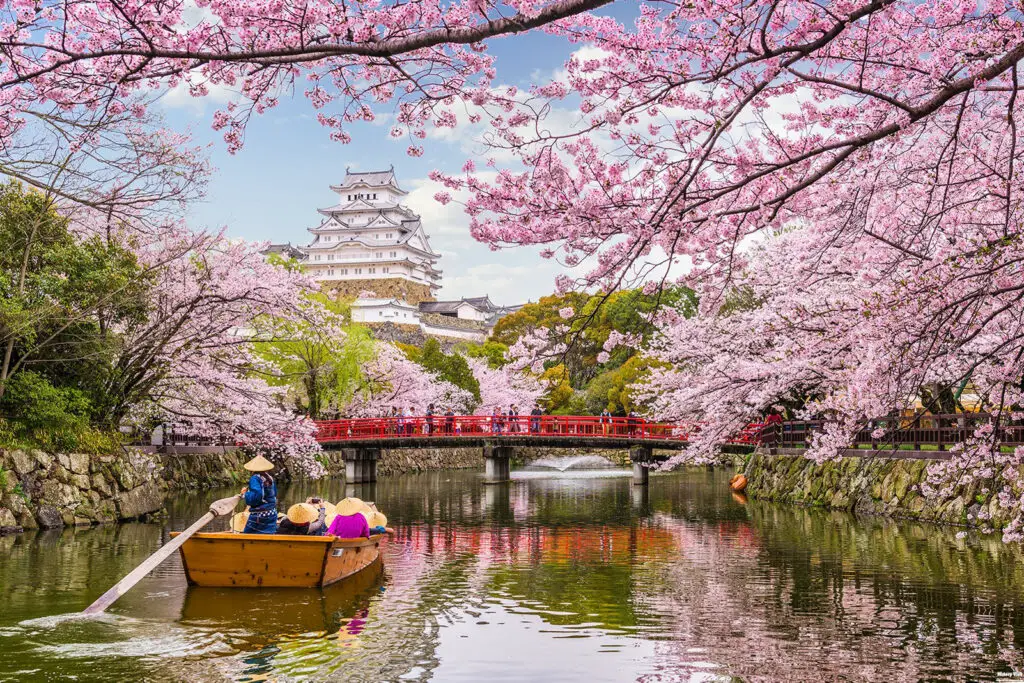
Experiencing Himeji Castle firsthand is a journey through Japan’s rich history and architectural brilliance. The castle is open to the public year-round, offering visitors the opportunity to explore its many wonders. Tickets can be purchased at the entrance, and guided tours are available in multiple languages, providing valuable insights into the history, architecture, and cultural significance of the castle.
Visitors can begin their tour by walking through the Otemon Gate, the main entrance to the castle grounds. From there, they can explore the various defensive structures, including the moats, walls, and gates that have protected the castle for centuries. The main keep, with its steep staircases and panoramic views, is a highlight of any visit. The interior of the keep features displays of historical artifacts, providing a deeper understanding of the castle’s history and significance.
The surrounding gardens, including the Nishi-no-Maru Garden and the Koko-en Garden, offer a tranquil escape and a chance to appreciate the beauty of the castle in different seasons. Cherry blossoms in spring, lush greenery in summer, vibrant foliage in autumn, and serene snow-covered scenes in winter all enhance the visitor experience. Seasonal events, such as cherry blossom festivals and historical reenactments, provide additional attractions and activities for visitors to enjoy.
Conclusion
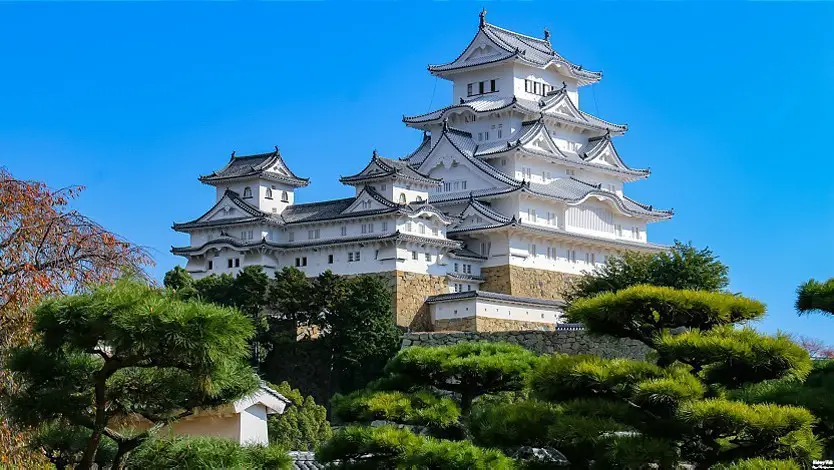
Himeji Castle stands as a remarkable testament to Japan’s architectural, cultural, and historical heritage. Its strategic design, architectural beauty, and historical significance make it a unique and captivating destination that continues to inspire awe and admiration. The castle’s resilience through centuries of political and natural challenges is a testament to the skill and dedication of those who built and preserved it.
As we have explored in this article, Himeji Castle’s strategic design, historical development, architectural beauty, and cultural importance all contribute to its enduring legacy. The extensive preservation efforts ensure that this UNESCO World Heritage site remains a vibrant and accessible part of Japan’s cultural heritage, providing valuable insights into the feudal era and the cultural practices of the time.
For those fortunate enough to visit, Himeji Castle offers a profound and immersive experience that allows them to connect with the rich history and cultural traditions of Japan. It is a place where history and art converge, creating a timeless monument that continues to captivate the hearts and minds of all who encounter it. Himeji Castle remains a beacon of cultural heritage, a symbol of the artistic and architectural genius of its creators, and a testament to the enduring power of beauty and history.


